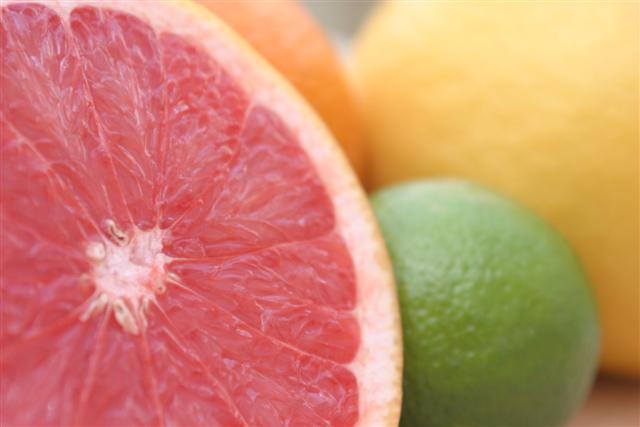- Home
- About Us

Citrus forms an important part of our product range
Read moreAbout Us
- How We Work

We have own roses under cultivation in Bulgaria
Read moreHow We Work
- News
- Products
- Services

We ship to more than 50 countries worldwide
Read moreServices
- Contact Us
- Home
- Products
Products
We are committed to providing only the highest quality of flavour and fragrance ingredients on demand to our customers worldwide. Our diverse product list offers a selection of over 250 natural and synthetic aroma chemicals, coolants, essential oils and extracts. Even if you cannot find a specific product you are looking for, do contact us as we may still be able to help.
Filter products by:
Clear allKeyword or product code
Lemon Oil California Type 10-Fold Citrus limon (L.) Burm. F.
The high terpene content in citrus oils can limit their application in water-based food and beverage consumer products. Partial or full deterpenation of the oil results in improved solubility and varying odour profiles depending on both the method and extent to which it is carried out.
EU Natural | DMA Code: 800351 | CAS Number: 84929-31-7 | FEMA Number: 2625
Lemon Oil California Type 2-Fold Citrus limon (L.) Burm. F.
The high terpene content in citrus oils can limit their application in water-based food and beverage consumer products. Partial or full deterpenation of the oil results in improved solubility and varying odour profiles depending on both the method and extent to which it is carried out.
EU Natural | DMA Code: 800349 | CAS Number: 84929-31-7 | FEMA Number: 2625
Lemon Oil California Type 5-Fold Citrus limon (L.) Burm. F.
The high terpene content in citrus oils can limit their application in water based food and beverage consumer products. Partial or full deterpenation of the oil results in improved solubility and varying odour profiles depending on both the method and extent to which it is carried out.
EU Natural | DMA Code: 800350 | CAS Number: 84929-31-7 | FEMA Number: 2625
Lemon Oil Spanish Type Citrus limon (L.) Burm. F.
The Lemon tree is a small, thorny, evergreen tree native to India. It is now cultivated in South America, Florida, California and Southern Europe.
EU Natural | DMA Code: 800876 | CAS Number: 8008-56-8 | FEMA Number: 2625
Lemon Oil Washed Citrus limon (L.) Burm. F.
The expressed oil is mixed with food grade solvents (often ethanol and water) to extract the flavouring components away from the terpene hydrocarbons. Up to half of the oxygenated flavour components are left behind in the 'washed' oil making it an excellent flavour base.
EU Natural | DMA Code: 800359 | CAS Number: 84929-31-7 | FEMA Number: 2625
Lemon Terpenes Citrus limon (L.) Burm. F.
Monoterpene hydrocarbons, typically referred to as 'terpenes', are generally removed by high vacuum fractional distillation of the essential oil (although a number of other processes exist). Terpenes often find a use as commercially competitive fragrance ingredients.
EU Natural | DMA Code: 800358 | CAS Number: 84929-31-7 | FEMA Number: 2625
levulinic acid 4-oxopentanoic acid
A keto acid with the molecular formula C5H8O3, it is found in nature and has a sweet, creamy, acidic, buttery, guaiacol-like odour.
Synthetic | DMA Code: 800156 | CAS Number: 123-76-2 | FEMA Number: 2627
Lime Essence Oil Citrus aurantifolia (Christman) Swingle
Typically used to add a juicy character to flavours, this oil recovered through the decanting of the condensed water obtained during the concentration of Mexican lime juice.
EU Natural | DMA Code: 800369 | CAS Number: 90063-52-8 | FEMA Number: 2631
Lime Oil Distilled Mexican Type Citrus aurantifolia (Christman) Swingle
The screw-pressing of the fruit produces a juice-essential oil emulsion. The emulsion is then steam distilled and the oil separated from the condensate by decantation. The drastic thermal treatment in the highly acidic lime juice leads to changes in the essential oil. However these changes are appareciated for some applications and furthermore, having undergone drastic acid-thermal action, the oil is extremely stable in acid applications.
EU Natural | DMA Code: 800362 | CAS Number: 90063-52-8 | FEMA Number: 2631
Lime Oil Distilled West Indian Type Citrus aurantifolia (Christman) Swingle
The screw-pressing of the fruit produces a juice-essential oil emulsion. After the juice is largely separated from the settled oil layer, still steam-distillation of the remaining juice-oil emulsion takes place. This results in changes to the essential oil that are similar to the changes induced by thermal treatment in highly acidic conditions.
EU Natural | DMA Code: 800366 | CAS Number: 90063-52-8 | FEMA Number: 2632
Lime Oil Distilled West Indian Type 5-Fold Citrus aurantifolia (Christman) Swingle
The high terpene content in citrus oils can limit their application in water-based food and beverage consumer products. Partial or full deterpenation of the oil results in improved solubility and varying odour profiles depending on both the method and extent to which it is carried out.
EU Natural | DMA Code: 800368 | CAS Number: 90063-52-8 | FEMA Number: 2632
Lime Oil Expressed Persian Citrus latifolia Tanaka
Persian limes are the larger of the two commercially grown varieties. They grow on almost thornless trees and are seedless and similar in size and shape to lemons. Although there is a small production in Florida, the bulk of Persian limes are grown in Mexico and Brazil, where they are called Tahiti limes. The oil is usually expressed using FMC type extractors, although in Mexico rasping equipment is not uncommon.
EU Natural | DMA Code: 800370 | CAS Number: 90063-52-8 | FEMA Number: 2631
Lime Oil Expressed West Indian Type 4-Fold Citrus latifolia Tanaka
The high terpene content in citrus oils can limit their application in water-based food and beverage consumer products. Partial or full deterpenation of the oil results in improved solubility and varying odour profiles depending on both the method and extent to which it is carried out.
EU Natural | DMA Code: 800372 | CAS Number: 90063-52-8 | FEMA Number: 2631
linalool 3,7-dimethylocta-1,6-dien-3-ol
A terpene alcohol with the molecular formula C10H18O, it is found in nature and has a citrus, floral, sweet, rose-like odour.
Synthetic | DMA Code: 800155 | CAS Number: 78-70-6 | FEMA Number: 2635
Litsea Cubeba Oil Litsea cubeba
The harvesting season of the berries of litsea cubeba trees in China takes place in a very short period of time (three weeks during August-September). The trees are grown in mountainous regions and poor weather conditions can sometimes greatly affect the harvest. The oil is a major source of citral with a content of around 85%.
EU Natural | DMA Code: 800378 | CAS Number: 90063-59-5 | FEMA Number: 3846
maltol 3-Hydroxy-2-methyl-4H-pyran-4-one
An organic compound with the molecular formula C3H6O3, it is found in nature and has a sweet, caramel, jam, candy-like odour.
Synthetic | DMA Code: 800161 | CAS Number: 118-71-8 | FEMA Number: 2656
maltol EU natural 3-hydroxy-2-methyl-4H-pyran-4-one
An organic compound with the molecular formula C3H6O3, it is found in nature and has a sweet, caramel, jam, candy-like odour.
EU Natural | DMA Code: 800279 | CAS Number: 118-71-8 | FEMA Number: 2656
Mandarin Oil Italian Type Citrus reticulata Blanco
In contrast with tangerine, mandarin oil has an amine-type topnote. Although sweet, its odour is not as fresh or refreshing as other citrus oils. Its application in flavourings is mainly as a modifier for citrus beverage compositions, such as orange and bitter orange.
EU Natural | DMA Code: 800380 | CAS Number: 84929-38-4 | FEMA Number: 2657
Mandarin Petitgrain Terpeneless Citrus deliciosa Ten., methyl N-methylanthranilate, dimethyl anthranilate
The starting material, mandarin petitgrain oil, is steam distilled from the fresh leaves and twigs. Sometimes whole, small, raw fruit or peel of raw fruit is added. Petitgrain oils with markedly varying levels of methyl N-methylanthranilate have been reported in the literature. The petitgrain oil is fractionated under vacuum to min. 98% dimethyl anthranilate and is most commonly used in natural grape flavours. Unlike methyl anthranilate, it will not form Schiff bases with aldehydes and is less likely to discolour.
EU Natural | DMA Code: 800383 | CAS Number: 85-91-6 | FEMA Number: 2854
massoia lactone natural (6R)-6-pentyl-5,6-dihydropyran-2-one, 5-hydroxy-2-decenoic acid delta-lactone
An alkyl lactone with the molecular formula C10H16O2, it is found in nature and has a creamy, milky, waxy, coconut-like odour.
EU Natural | DMA Code: 800280 | CAS Number: 54814-64-1 | FEMA Number: 3744
Email Sign up
You have been successfully signed up to the De Monchy newsletter
What you'll receive in every monthly De Monchy Newsletter
- A round up of the latest news from the flavour & fragrance industry.
- Insight into the effects of currency fluctuations, political unrest and severe weather on a range of flavour and fragrance raw materials.
- Our opinion on likely market movements including buy recommendations and suggestions of what to watch.

